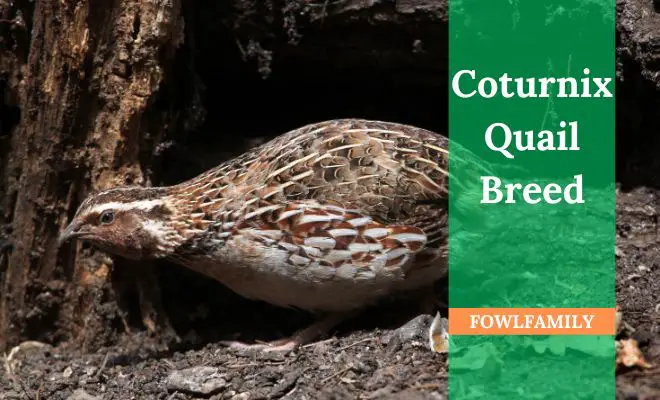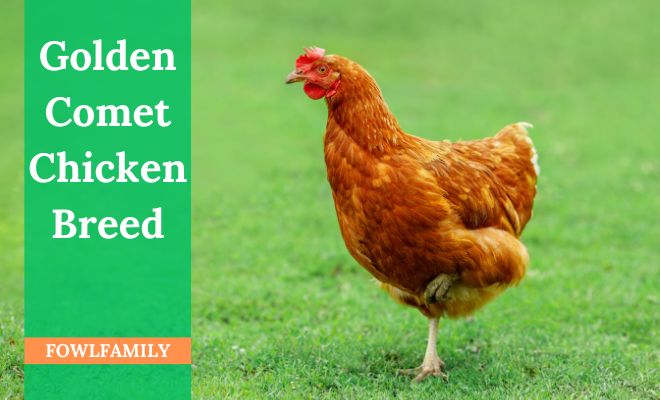
The Serama chicken breed is a small chicken, known for their petite size and charming personality. Originating from Malaysia, these pint-sized poultry pals have captured the hearts of chicken enthusiasts worldwide.
The defining characteristic of the Serama breed is their miniature size, with some adults weighing 8 ounces. Despite their small size, Serama chickens boast big personalities and popularity! Seramas are robust and active birds and often display high confidence. It Comes in a variety of colors and patterns!
Beyond their aesthetic appeal, Serama chickens have a social nature. They thrive on human interaction and are known to form strong bonds. Want to pet them? Let’s learn how to raise Serama chicken!
Table of Contents
Serama Chicken Breed Profile
If you do not know, The Serama is one of the smallest chicken breeds in the world! So, curiosity comes to know about them a little. So, here’s a table of their characteristics and descriptions in a nutshell –
| Characteristic | Description |
|---|---|
| Size | Bantam |
| Weight | Cock: 500g (1.1 lbs), Hen: 400g (0.9 lbs) |
| Purpose | Ornamental, Exhibition |
| Egg Production | Fair, around 150 small eggs per year |
| Egg Color | White or tinted |
| Temperament | Active, curious, good pets |
| Broodiness | Good |
| Hardiness | Fairly hardy |
| Recognized Varieties | Many, including Black, White, Red, Wheat, and more |
| Lifespan | 7-10 years |
| Country of Origin | Malaysia |
| Comb Type | Pea or Strawberry |
History And Location Of the Serama Chicken Breed
The Serama chicken breed has an interesting history!
The Serama chicken comes from Malay Hindu culture. Its name comes from Sri Rama, a Hindu king in myths. The exact beginnings of Serama are uncertain, but it seems to have come about a few years after Malaysian and Japanese Chabo bantams were mixed.
These tiny chickens originated in Malaysia. They get their name from the Malaysian word “meringmas” which means short or tiny.
Seramas were bred in villages on the Malay Peninsula. They developed over many years. Farmers wanted very small chickens. The small size was useful for living in hot, tropical areas.
In the late 1600s, Seramas caught the attention of royalty. The Sultan of Johor took an interest. He helped promote the breeding of the miniature chickens.
The Serama breed we know today was made in the early 1970s by WeeYean Een in Malaysia. But people think the breed might have started way back in the 1600s.
Today, Seramas are popular internationally as ornamental poultry. They are exhibited and kept as unique pets. Major breed clubs exist in Malaysia, Europe, and North America.
The breed’s roots can still be found in rural villages in Malaysia. Many Malaysian families keep small flocks of Seramas for food and cultural purposes.
Physical Appearance of the Serama Chicken Breed
Don’t let their small size fool you! Seramas are beautiful! Let’s break down the adorable physical traits that make them so irresistible.
Male Specifics
- Showy Plumage: Male Seramas often have more vibrant and elaborate plumage compared to females. They may display beautiful patterns and contrasting colors.
- Large Combs and Wattles: Males typically have larger, more prominent combs (the fleshy crest on their head) and wattles (the fleshy flaps under their beak).
Female Specifics
- Subtle Plumage: Females tend to have more subdued plumage compared to males. Their colors may be more muted or solid.
- Smaller Combs and Wattles: Female Seramas have smaller combs and wattles than their male counterparts.
Shared Traits
- Tiny Size: Both males and females are incredibly small, with roosters weighing in at just 10-18 ounces and hens slightly less. They’re super small, only 15-25 centimeters tall, and are made by mixing Japanese and Malaysian bantams.
- Upright Posture: Seramas stand tall and proud, with their bodies held nearly vertical. This gives them a regal air despite their miniature size.
- Perky Tails: Their tails are held high, adding to their overall elegant appearance.
- Quiet Crows: Unlike some rooster breeds, Serama roosters have a much quieter crow, making them ideal for backyard flocks or urban areas.
Here is a video of this beautiful breed –
What Are the Characteristics of the Serama Chicken?
Seramas are the world’s smallest chickens, but their charm goes beyond their miniature size. Let’s explore the personality traits –
Friendly and Docile
Seramas are known for their calm and friendly nature. They are easily handled and can be quite tame, making them perfect for families with children (with adult supervision, of course!).
Unlike some chicken breeds that can be skittish or flighty, Seramas tend to be more curious and approachable.
Surprisingly Active
Seramas are surprisingly active birds! They love to explore their environment, peck at the ground for treats, and flutter around their coop.
Providing them with enrichment activities like scratching posts and dust baths helps them stay mentally stimulated.
Quiet and Chatty (in their own way)
While their crows are much quieter than other roosters, Seramas do still vocalize. They have a variety of chirps, clucks, and trills that they use to communicate with each other.
These little sounds can be surprisingly endearing! It’s what adds to the overall charm of these miniature feathered friends.
Generally Good with Other Chickens
Seramas can be successfully integrated into existing flocks, especially with other docile breeds. However, it’s always important to monitor them during introductions. It’s because any new bird can disrupt the coop’s social hierarchy.
Due to their small size, it’s best to avoid housing them with larger, more aggressive chicken breeds.
They Have Boldness
Despite their small size, Seramas can be surprisingly bold. This can sometimes get them into trouble, as they might not be afraid to approach larger animals or unfamiliar objects.
Curious Pet
Their inquisitive nature makes them fun to observe. They’ll readily investigate new things in their environment and enjoy exploring every nook and cranny of their coop.
Talkative Tendencies
While their vocalizations are quieter than other chickens, Seramas can still be quite chatty. They may chirp and cluck frequently, especially when excited or seeking attention.
Potential for Attachment
With proper handling and interaction, Seramas can form strong bonds with their caregivers. They may even enjoy gentle petting and may follow you around the coop.
Reproduction and Breeding of the Serama Chicken Breed
Seramas, like most chickens, are seasonal breeders. If you’re interested in expanding the Serama chicken population, here’s what you need to know –
When do Serama Chickens Breed?
Serama hens, like most chickens, can start laying eggs as early as 5-6 months old. However, due to their small size, it’s generally recommended to wait until they are at least 8 months old.
If you live in a climate with significant seasonal changes, spring and summer will be perfect!
How Long Does it Take for Serama Eggs to Hatch?
Similar to other chicken breeds, the incubation period for Serama eggs is around 21 days. Once the eggs are laid, a broody hen or an incubator must used to ensure proper development and hatching.
How To Breed Serama Chickens?
Breeding Seramas requires careful planning and a good understanding of their needs. Here are some simplified steps.
- Select Healthy Breeding Stock: Choose healthy, mature Seramas that meet your desired breed standards.
- Prepare a Nesting Box: Provide a clean, comfortable nesting box with plenty of soft bedding for the hen to lay her eggs.
- Monitor the Eggs: Once the hen starts laying, ensure the eggs are fertile and being kept at the proper temperature for incubation.
- Hatching: After 21 days, chicks should begin to hatch. You can assist with the hatching process if needed.
How Many Eggs Does the Serama Chicken Breed Lay?
While Seramas can lay eggs, they are not known for high egg production. They typically lay only 1-3 small eggs per week. It’s 150 eggs yearly!
Which Color Eggs Do Serama Chickens Lay?
The color of Serama eggs can vary depending on the individual hen. Common egg colors include cream, white, or light brown.
What Purpose Does Serama Chicken Breed Serve the Best?
If you look for perfection with beauty, Serama chickens are to pick!
Seramas can technically be used for egg and meat production. But their small size makes them much more suited to other purposes. Let’s know their best purposes –
Ornamental and Exhibition
Seramas are considered ornamental chickens. This means their main purpose is to show and as unique pets. Their tiny size and distinctive appearance make them prized by poultry fanciers.
Seramas are frequently exhibited at poultry shows. Breeders aim to produce the smallest, most eye-catching examples of the breed. Keeping Seramas for the exhibition is very popular.
Backyard Pets
With their small size, Seramas make great backyard pet chickens. They can thrive in very limited spaces like urban yards. Their curious, friendly personalities make them fun to watch.
Seramas adapt well to confinement if given proper housing. Many chicken keepers enjoy having these little, low-maintenance birds around.
Cultural Importance
In Malaysia, the Seramas hold cultural significance. For centuries, they have been raised by rural villagers. Serama chickens play a role in traditions, rituals, and cockfighting.
The breed retains importance in its homeland. Though cockfighting is controversial, the Serama’s Malaysian ancestry is valued by breeders worldwide.
Educational Projects
Seramas can make great chickens for 4H projects, agricultural education programs, and learning about exotic poultry breeds. Their small size is convenient for school settings.
7 Tips to Raise the Serama Chicken Breed
Want to raise this little bantam chicken? Here’s what you need to keep in mind –
- Housing: Seramas need a secure, predator-proof coop and run area.
- Diet: Feed a quality, complete chicken feed appropriate for their age and purpose.
- Flock Size: Keep a minimum flock size of 3-5 birds.
- Brooding: Seramas go broody easily. Provide nest boxes and leave broody hens to raise their own chicks if desired.
- Handling: Get Seramas used to being handled gently from a young age.
- Protection: Protect Seramas from extreme temperatures, predators like hawks/cats, and overly aggressive larger chickens.
- Health: Seramas are generally hardy for their size but can have issues like respiratory problems. Provide good coop ventilation and watch for bullying injuries.
Pros And Cons of Having a Serama Chicken Breed
Just before you decide to get Serama chickens, here are the pros and cons! It’s to remind you about their good and bad –
Pros
- Perfect for small spaces
- Ideal for backyards or urban areas
- Docile and can be quite tame
- Relatively low maintenance
Cons
- Low egg production
- Need careful handling
- Not for free-ranging
- Challenging breeding
Related Articles:
FAQs
Check out the following queries to get more facts about Serama chickens.
Q. Are Serama chickens expensive?
Yes, compared to other chickens, Seramas are more expensive. It’s due to their rarity and unique characteristics.
Q. Do Serama fly?
While they have wings, Seramas can only fly short distances. They cannot fly much due to their small size and body weight.
Q. Are Seramas smaller than bantams?
Yes, Seramas are considered the smallest recognized chicken breed. It’s even smaller than most other bantam breeds.
Q. What are the traditional colors of Serama?
Seramas come in a wide variety of colors, including black, white, buff, and various combinations.
Q. Do Serama roosters crow?
Yes, Serama roosters do crow, but their crows are much quieter than those of other rooster breeds.
Q. What is a silkie Serama?
Silkie Seramas are a rare variety of Serama with a unique fluffy plumage similar to Silkie chickens.
Q. What is the difference between American Serama and Malaysian Serama?
There isn’t a major distinction between American and Malaysian Seramas. Both countries have their breeding standards, but the overall characteristics of the breed remain similar.
Final Word
The Serama chicken breed is truly a unique and captivating addition to any backyard flock or poultry collection. Despite their diminutive size, these feathery companions pack a big personality and an irresistible charm that’s hard to resist.
From their friendly and curious nature to their cultural significance, Seramas offers a delightful experience for both novice and experienced chicken enthusiasts. With proper care and attention, these tiny birds can thrive and bring joy to their owners for many years to come.






